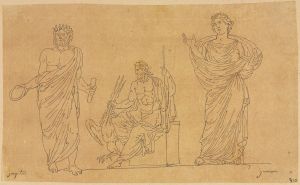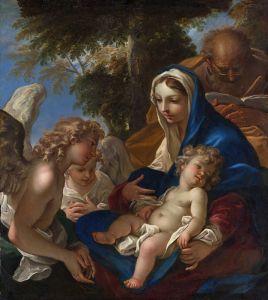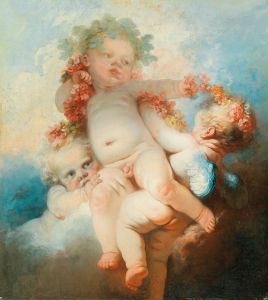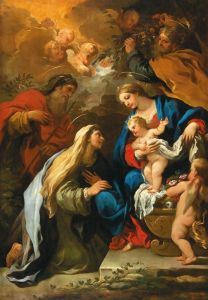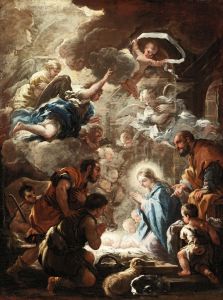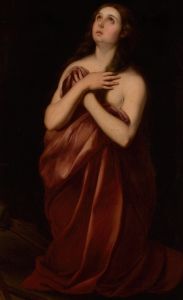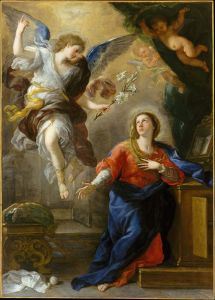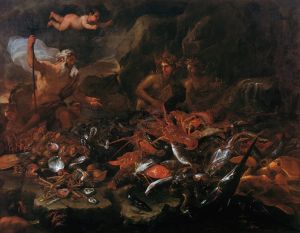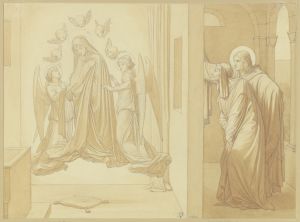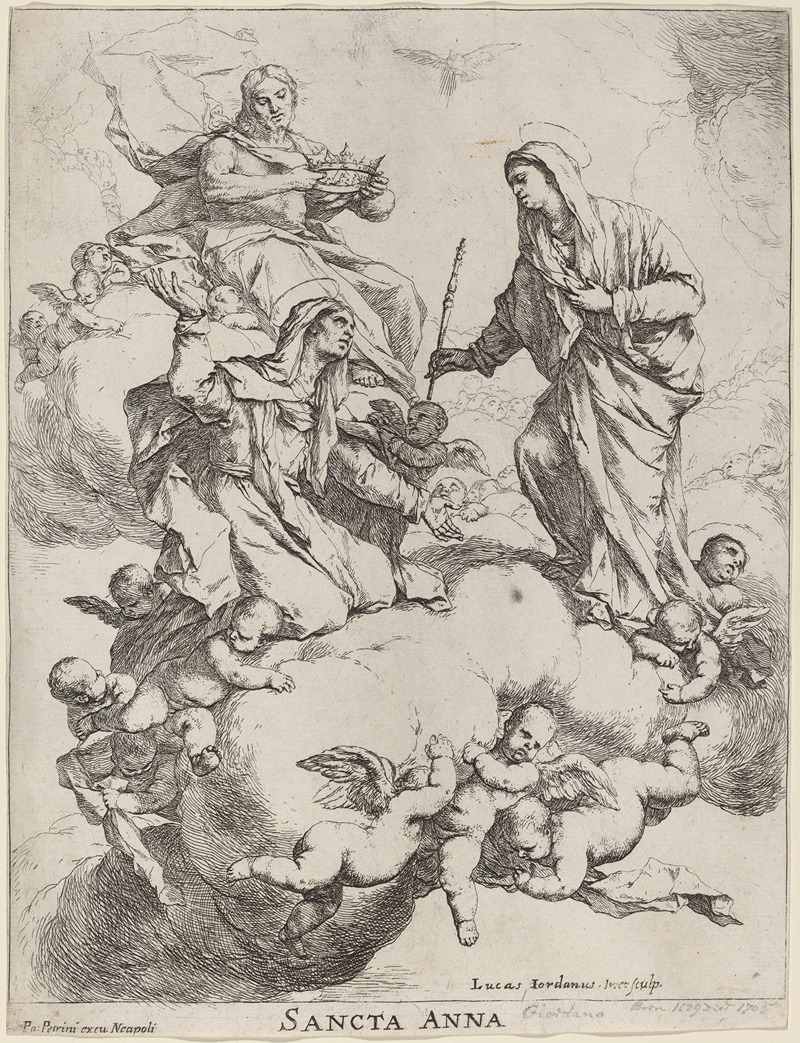
Saint Anne Received by the Virgin and Christ
A hand-painted replica of Luca Giordano’s masterpiece Saint Anne Received by the Virgin and Christ, meticulously crafted by professional artists to capture the true essence of the original. Each piece is created with museum-quality canvas and rare mineral pigments, carefully painted by experienced artists with delicate brushstrokes and rich, layered colors to perfectly recreate the texture of the original artwork. Unlike machine-printed reproductions, this hand-painted version brings the painting to life, infused with the artist’s emotions and skill in every stroke. Whether for personal collection or home decoration, it instantly elevates the artistic atmosphere of any space.
Luca Giordano, an Italian Baroque painter renowned for his prolific output and vibrant style, created the painting "Saint Anne Received by the Virgin and Christ." This artwork exemplifies Giordano's mastery in combining dramatic compositions with vivid color palettes, a hallmark of the Baroque period. Born in Naples in 1634, Giordano was a prominent figure in the art world during the 17th century, known for his ability to produce works rapidly, earning him the nickname "Luca Fa Presto" (Luca, Work Quickly).
"Saint Anne Received by the Virgin and Christ" is a religious painting that reflects Giordano's deep engagement with spiritual themes, a common subject in his oeuvre. The painting depicts Saint Anne, the mother of the Virgin Mary, being received by her daughter and Jesus Christ. This subject matter is rooted in Christian tradition, where Saint Anne is venerated as the grandmother of Jesus and a symbol of maternal virtue and piety.
Giordano's work is characterized by its dynamic composition and the use of light to create a sense of movement and emotion. In this painting, Giordano employs these techniques to convey the sanctity and reverence of the moment. The figures are arranged in a way that draws the viewer's eye towards the central interaction between Saint Anne, the Virgin Mary, and Christ, highlighting the familial and divine connections.
The use of color in "Saint Anne Received by the Virgin and Christ" is particularly noteworthy. Giordano's palette is rich and varied, with warm tones that enhance the painting's emotional impact. The interplay of light and shadow adds depth to the scene, a technique that Giordano mastered through his studies of other Baroque artists, including Peter Paul Rubens and Jusepe de Ribera.
Giordano's ability to blend influences from different artistic traditions is evident in this painting. His exposure to the works of Venetian painters, with their emphasis on color and light, and the dramatic intensity of Spanish Baroque art, informed his unique style. This synthesis of influences allowed Giordano to create works that were both innovative and deeply rooted in the artistic traditions of his time.
The painting is also a testament to Giordano's skill in capturing human emotion and divine presence. The expressions and gestures of the figures convey a sense of grace and devotion, inviting viewers to reflect on the spiritual significance of the scene. This ability to evoke emotion through art was a key aspect of Giordano's success and popularity during his lifetime.
"Saint Anne Received by the Virgin and Christ" is part of Giordano's broader body of work that includes numerous altarpieces, frescoes, and canvases commissioned by churches and patrons across Europe. His reputation as a versatile and talented artist led to commissions from prominent patrons, including the Spanish court, where he worked extensively in the latter part of his career.
Today, Luca Giordano's paintings are celebrated for their technical brilliance and emotional depth. "Saint Anne Received by the Virgin and Christ" remains an important example of his contribution to Baroque art, reflecting both his personal style and the broader artistic trends of the 17th century. The painting continues to be studied and admired for its artistic and historical significance, offering insight into the religious and cultural context of its time.





